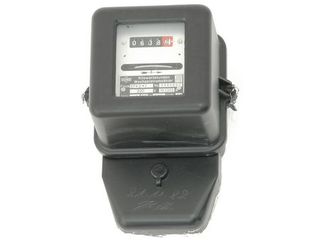Tom's Energy Efficiency Guide

Energy Efficient Component Choices

Power consumption and energy efficiency have become the most discussed items in IT hardware this year. While power consumption refers to the total input of power required for a device to operate at various given states, energy efficiency is even more relevant, as it relates performance to power consumption. The common approach is to calculate the ratio of performance per watt, whereas performance can be assessed depending on the desired unit of measurement. The industry has developed an awareness of the market sensitivity for this topic, and has been releasing products that specifically cater to an energy-conscious audience. Some of these products make sense, but many of them don’t, and as it happens, common sense is the most powerful tool to understanding how to optimize energy efficiency.
Power consumption readings for a device or an entire PC are very important to calculating the minimum and maximum power requirements when devices or PCs are idle or working at high loads, but they tend to be theoretical values. Minimum power requirements often do equal the actual requirements when a device or PC is idle, but maximum power draw only applies for components that are kept steadily busy. In most cases, maximum power requirement is reached only during a limited time, for example as long as a processor is busy compressing files into a zip archive.
As a result of application-dependent and hence severely varying power consumption, it makes the most sense to discuss energy efficiency from an application standpoint, like we did it in the articles AMD CPU Efficiency Compared and Intel Power Consumption Then and Now. The essential questions to ask are:
1. How much power does my PC require when it is running idle?
Extreme power-saving PCs offer little power consumption, but poor performance.
2. How much power does my PC require to complete a given task, and how quick can the task be finished?
Performance comes into the equation here: a slow solution might take forever to run, and thus consume more energy than a faster solution that goes back into an idle state much quicker after completing the task.
Stay on the Cutting Edge
Join the experts who read Tom's Hardware for the inside track on enthusiast PC tech news — and have for over 25 years. We'll send breaking news and in-depth reviews of CPUs, GPUs, AI, maker hardware and more straight to your inbox.
3. What’s the real energy efficiency (performance per watt over time) at a given workload level?
As you can imagine, the last question can only be answered by relating performance to power consumption for a given workload, which automatically includes a certain period of time that is required to complete the workload. The unit of measurement hence is not only watts, but watt-hours required to complete the job. While a device’s idle power requirements define the minimum power consumption you can expect, the workload type and duration of the workload define the peak power requirements and sustained peak power consumption during processing. Obviously, performance is quite an important factor as well, as a fast system will return into an idle system state much quicker than a slower energy-saving one, which might hence consume more power overall to complete the same workload.
We selected some system components to consider when assembling an energy efficient computer. Although there are low-power components available in almost all component categories, many of these don’t make sense, either because they are too expensive, or because the savings compared to standard components aren’t substantial enough to justify spending more. Let’s take a look.
Most Popular

